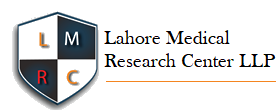Toxic Impact of Chlorpyrifos Insecticide on the Ovary of Pigeon (Columba livia domestica)
Chlorpyrifos Impact on Pigeon Ovary
DOI:
https://doi.org/10.54393/mjz.v5i01.96Keywords:
Chlorpyrifos, Histological Examination, Ovaries, PigeonsAbstract
Modern agriculture and vector-borne diseases are responsible for the rapid increase in pesticide usage, which is harmful to animals, particularly birds. The declining in the diversity of bird’s species is a major concern Chlorpyrifos (CPF) is the commonly used insecticide in agriculture sector. Unfortunately, CPF is still being applied across the world. Objective: To evaluate the toxic impact of chlorpyrifos on the ovaries of the pigeon in relation to the reproductive toxicity. Methods: For this purpose, N=80 healthy (Columba Livia domestica) pigeons were used. Pigeons had been acclimated for fifteen (15) days and divided into four equal groups (A-D) Oral dosages 1.3 mg, 1.6 mg, and 2.1 mg per kg body weight per day of chlorpyrifos (CPF) were administered respectively to group B, C and D for 84 consecutive days and pigeons from group (A) assigned as control. Daily observations were made on stress-related signs and behavioral changes. (H & E) staining method was applied to examine histological change in the ovary of pigeons after exposure to CPF, likewise for the control. Results: Birds from groups B-D displayed notable clinical signs such as: tremors, salivation, open-mouth breathing, ruffled feathers, lethargy and watery diarrhea and reduced food intake. The Histological examinations revealed that the ovary of pigeons from the B, C, and D showed notable variations such as follicular degeneration, vacuolation, hypertrophy, and fibrosis after exposure to CPF. The intensity was on high doses as compared to control which were with normal ovarian articulation small containing big follicles of all diameters. Oocytes, thecal layers, granulosa layers (g), stromal Tissue, and nucleus contained yolk-like secondary oocytes, mature follicles. Conclusions: In current study it was concluded that, the CPF produced drastic impact on the ovary of pigeon that may be associated with alterations in reproduction.
References
Zhang W, Jiang F, Ou J. Global pesticide consumption and pollution: with China as a focus. Proceedings of The International Academy of Ecology and Environmental Sciences. 2011 Aug; 1(2): 125.
Daly HV, Doyen JT, Ehrlich PR. Introduction to Insect Biology and Diversity. 1978.
Khan MA, Iqbal M, Ahmad I, Soomro MH, Chaudhary MA. Economic evaluation of pesticide use externalities in the cotton zones of Punjab, Pakistan. The Pakistan Development Review. 2002 Dec: 683-98. doi: 10.30541/v41i4IIpp.683-698.
Aktar W, Sengupta D, Chowdhury A. Impact of pesticides use in agriculture: their benefits and hazards. Interdisciplinary Toxicology. 2009 Mar; 2(1):1-2. doi: 10.2478/v10102-009-0001-7.
Al-Saleh IA. Pesticides: A Review Article. Journal of Environmental Pathology, Toxicology and Oncology: Official Organ Of The International Society For Environmental Toxicology And Cancer. 1994 Jan; 13(3):151-61.
Khan MI, Shoukat MA, Cheema SA, Arif HN, Niazi NK, Azam M et al. Use, contamination and exposure of pesticides in Pakistan: A Review. Pakistan Journal of Agricultural Sciences. 2020 Jan; 57(1).
Waheed S, Halsall C, Sweetman AJ, Jones KC, Malik RN. Pesticides contaminated dust exposure, risk diagnosis and exposure markers in occupational and residential settings of Lahore, Pakistan. Environmental Toxicology and Pharmacology. 2017 Dec; 56: 375-82. doi: 10.1016/j.etap.2017.11.003.
Khaleghizadeh A, Roselaar K, Scott DA, Tohidifar M, Blair M, Mlíkovský J. Birds of Iran: Annotated checklist of the species and subspecies. Tehran: Iranshenasi Publishing; 2017.
Cooper JE. The role of birds in sustainable food production. Biodiversity & Conservation. 1995 Apr; 4: 266-80. doi: 10.1007/BF00055973.
Ledere R. Medicinal Uses of Birds. 2015. [Last cited: 04th April 2024]. Available at: http://ornithology.com/medicinaluses-of-birds.
Adam AV. International code of conduct on the distribution and use of pesticides. 1987.
Bolognesi C. Genotoxicity of pesticides: A Review of Human Biomonitoring Studies. Mutation Research/Reviews in Mutation Research. 2003 Jun; 543(3): 251-72. doi:10.1016/S1383-5742(03)00015-2.
Goldman LR. Managing pesticide chronic health risks: US policies. Journal of Agromedicine. 2007 Jul; 12(1): 67-75. doi: 10.1300/J096v12n01_07.
Lernoud J, Willer H, Kilcher L. The world of organic agriculture. Statistics and Emerging Trends. 2016: 23-4.
Pelaez V, da Silva LR, Araujo EB. Regulation of Pesticides: A Comparative Analysis. Science and Public Policy. 2013 Oct 1; 40(5): 644-56. doi: 10.1093/scipol/sct020.
Slotkin TA, Seidler FJ, Fumagalli F. Exposure to organophosphates reduces the expression of neurotrophic factors in neonatal rat brain regions: similarities and differences in the effects of chlorpyrifos and diazinon on the fibroblast growth factor superfamily. Environmental Health Perspectives. 2007 Jun; 115(6): 909-16. doi: 10.1289/ehp.9901.
Eaton DL, Daroff RB, Autrup H, Bridges J, Buffler P, Costa LG et al. Review of the toxicology of chlorpyrifos with an emphasis on human exposure and neurodevelopment Critical reviews in toxicology. 2008 Jan; 38(2): 1-25. doi: 10.1080/10408440802272158.
Suliman, Khan A, Shah SS, Gulfam N, Khisroon M, Zahoor M. Toxicity evaluation of pesticide chlorpyrifos in male Japanese quails (Coturnix japonica). Environmental Science and Pollution Research. 2020 Jul; 27: 25353-62. doi: 10.1007/s11356-020-08953-4.
Trijau M, Goussen B, Brain R, Maul J, Galic N. Development of a mechanistic model for analyzing avian reproduction data for pesticide risk assessment. Environmental Pollution. 2023 Jun; 327: 121477.
Kamrin MA. Pesticide profiles: toxicity, environmental impact, and fate. CRC Press; 1997. doi: 10.1201/9781420049220.
Slotkin TA, Seidler FJ, Ryde IT, Yanai J. Developmental neurotoxic effects of chlorpyrifos on acetylcholine and serotonin pathways in an avian model. Neurotoxicology and Teratology. 2008 Sep; 30(5): 433-9. doi: 10.1016/j.ntt.2008.02.005.
Kammon AM, Brar RS, Sodhi S, Banga HS, Nagra NS, Singh J. Ameliorating effect of vitamin C on immunological implications induced by chronic chlorpyrifos toxicity in broilers. Libyan Veterinary Medical Journal. 2010; 1: 164-80.
Henna Wani HW, Shafiqur Rahman SR, Shagufta Azmi SA, Sahil Dutta SD, Maneesh Sharma MS. Effect of chlorpyrifos toxicity on growth parameters in broiler chickens. 2015.
Young H. A consideration of insecticide effects on hypothetical avian populations. Ecology. 1968 Sep; 49(5): 991-4. doi: 10.2307/1936550.
Fontaine R, Neves VC, Rodrigues TM, Fonseca A, Gonçalves D. The breeding biology of the endemic Azores Woodpigeon Columba palumbus azorica. Ardea. 2019 May; 107(1): 47-60. doi: 10.5253/arde. v107i1.a4.
Greaves AK, Letcher RJ. A review of organophosphate esters in the environment from biological effects to distribution and fate. Bulletin of Environmental Contamination and Toxicology. 2017 Jan; 98:2-7. doi: 10.1007/s00128-016-1898-0.
Raley-Susman KM. Like a Canary in the coal mine: behavioral change as an early warning sign of neurotoxicological damage. Pesticides-Toxic Aspects, Rijeka, InTech. 2014 Feb: 135-62.
Grue CE, Gibert PL, Seeley ME. Neurophysiological and behavioral changes in non-target wildlife exposed to organophosphate and carbamate pesticides: thermoregulation, food consumption, and reproduction. American Zoologist. 1997 Sep; 37(4): 369-88. doi: 10.1093/icb/37.4.369.
Grue CE, Hart AD, Mineau P. Biological consequences of depressed brain cholinesterase activity in wildlife. 1991.
Rattner BA, Sileo L, Scanes CG. Oviposition and the plasma concentrations of LH, progesterone and corticosterone in bobwhite quail (Colinus virginianus) fed parathion. Reproduction. 1982 Sep; 66(1): 147-55. doi: 10.1530/jrf.0.0660147.
Rattner BA, Sileo L, Scanes CG. Hormonal responses and tolerance to cold of female quail following parathion ingestion. Pesticide Biochemistry and Physiology. 1982 Aug; 18(1): 132-8. doi: 10.1016/0048-3575(82)90096-7.
Rattner BA, Clarke RN, Ottinger MA. Depression of plasma luteinizing hormone concentration in quail by the anticholinesterase insecticide parathion. Comparative Biochemistry and Physiology Part C: Comparative Pharmacology. 1986 Jan; 83(2): 451-3. doi: 10.1016/0742-8413(86)90153-2.
Schom CB, Abbott UK, Walker N. Organophosphorus pesticide effects on domestic and game bird species: Dursban.
Gile JD and Meyers SM. Effect of adult mallard age on avian reproductive tests. Archives of environmental contamination and toxicology. 1986 Nov; 15: 751-5. doi:10.1007/BF01054922.
Gupta RC, editor. Veterinary toxicology: basic and clinical principles. Academic press; 2012.
Mohammad F, Al-Badrany Y, Al-Jobory M. Acute toxicity and cholinesterase inhibition in chicks dosed orally with organophosphate insecticides. Archives of Industrial Hygiene and Toxicology. 2008 Sep; 59(3): 145-51. doi: 10.2478/10004-1254-59-2008-1873.
Malik G, Dahiya JP, Gera S. Biochemical studies on Chlorpyrifos toxicity in broiler chickens. The Indian Journal of Animal Sciences. 2004 May; 74(5).
Bharathi P, Reddy AG, Kalakumar B, Madhuri D. Experimental evaluation of certain herbs against chlorpyrifos-induced oxidative stress and toxicity in poultry. Indian Journal of Animal Sciences 2010 Feb; 80: 94-8.
Buriro SA, Birman NA, Shaikh AM. 96. New trematode Psilochasmus platyrhynchosi (Trematode: Psilochasmidae) from Mallard Anas platyrhynchos (Anseriformes: Anatidae) in Sindh province of Pakistan. Pure and Applied Biology (PAB). 2020 Feb; 9(1): 1025-30. doi: 10.19045/bspab.2020.90107
Birmani NA, Buriro SA, Shaikh AM, Dharejo AM. A new Notocotylid trematode Paramonostomum bagoderoi n. sp. (Trematoda: Notocotylidae) in Mallard Anas platyrhynchos (Anseriformes: Anatidae) in Sindh, Pakistan. International Journal of Advanced Research in Biological Sciences. 2016; 3: 130-5.
Downloads
Published
How to Cite
Issue
Section
License
Copyright (c) 2024 MARKHOR (The Journal of Zoology)

This work is licensed under a Creative Commons Attribution 4.0 International License.
This is an open-access journal and all the published articles / items are distributed under the terms of the Creative Commons Attribution License, which permits unrestricted use, distribution, and reproduction in any medium, provided the original author and source are credited. For comments editor@markhorjournal.com











